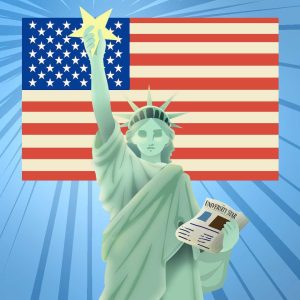On Sept. 11, the American Red Cross announced a national blood shortage due to the national blood supply dropping close to 25%.
According to Delia Kripplez, regional communications director for the American Red Cross serving Central and South Texas, low donor turnout and weather issues such as hurricanes attributes to the blood supply levels dropping.
“The active hurricane season… did cause a strain on our blood supply,” Kripplez said. “We had to cancel blood drives because there was no power and it was dangerous for people to travel.”
The story is no different in Central Texas and Hays County. Nick Canedo, vice president of communication at We Are Blood, an organization that provides blood to 10 Texas counties, including Hays County, said the organization saw a dip in donations this summer for similar climate reasons.
“We’ve been dealing with a historic heatwave and the busiest travel season that we’ve seen in many years [causing] a dip in donations and less blood drives posted,” Canedo said.
We Are Blood has four physical locations to donate blood in the Austin area and regularly hosts mobile blood drives around Central Texas, including in San Marcos, but with the summer heat, less people are able to attend mobile drives.
“While we’ve been dealing with this record number of 100 plus degree weather, we do feel that this heatwave has been dissuading individuals from attending blood drives in a hot parking lot,” Canedo said.
According to Canedo, Central Texas is also experiencing continual growth within the area putting more demand on blood centers to provide donations.
Roger Ruiz, senior corporate communications specialist for South Texas Blood and Tissue, a nonprofit that collects blood donations in Central and South Texas, said college students going home for the summer has an impact on blood donation levels.
“We see a decline in donations especially in the summertime when high schools and colleges are out where a big portion of blood comes from,” Ruiz said. “With [schools] still getting back into session, we’re still feeling the effects of not having enough donations coming in to supply and help the hospitals we serve.”
The U.S. Food and Drug Administration (FDA) has changed donation restrictions for LGBTQ+ individuals. According to We Are Blood, as of Sept. 6, 2023, the gender and sexual identity of donors will no longer be in consideration for eligibility which Canedo hopes can increase the amount of donors.
According to Ruiz, South Texas Blood and Tissue has to collect about 600 donations a day to be able to keep up with demand in the area. Currently, the center is averaging 350-400 donations a day; about a 30% decrease.
A solution that South Texas Blood and Tissue is implementing to increase donations is opening more mobile blood drives around the Central Texas area to accommodate those that may not be able to go down to a brick and mortar location.
“We are trying to partner with more organizations, churches and businesses where we can go and take our planners to set up a room to accommodate the community to try to offset the 20-30% decline,” Ruiz said.
South Texas Blood and Tissue is also increasing the frequency of donors in their physical locations, located in cities like New Braunfels, to allow more to donate at a time.
The Red Cross is also trying to increase the amount of mobile blood drives taking place and the amount of people that can attend.
“In the future as we work with our staff, we want to have drives that are larger that could hold up to maybe 100 people at a time,” Kripplez said. “Right now, typically, it’s about 30 donation sign ups per site.”
According to Canedo, We Are Blood hopes that once fall starts, students and other donors will be more likely to go to mobile drives due to the dropping temperatures as well as an increase in student involvement. We Are Blood is offering blood drives at Texas State on Oct. 9 and 10.
“Student groups can get into contact with We Are Blood to potentially host their own blood drive,” Canedo said.
The Red Cross is also trying to increase donations by using social media to connect to potential donors and to share stories.
“We’re really giving that donor outreach by sharing other people’s stories, shining the spotlight on them,” Kripplez said. “That way, people can be encouraged to donate blood, it can save a life.”
The Red Cross, South Texas Blood Tissue and We Are Blood all try to give incentives for people to donate, such as free shirts or water bottles.
For more information on blood donation locations and eligibility requirements, visit https://www.redcross.org/give-blood.html. For scheduling donations with We Are Blood, visit https://weareblood.org/donor/.





























